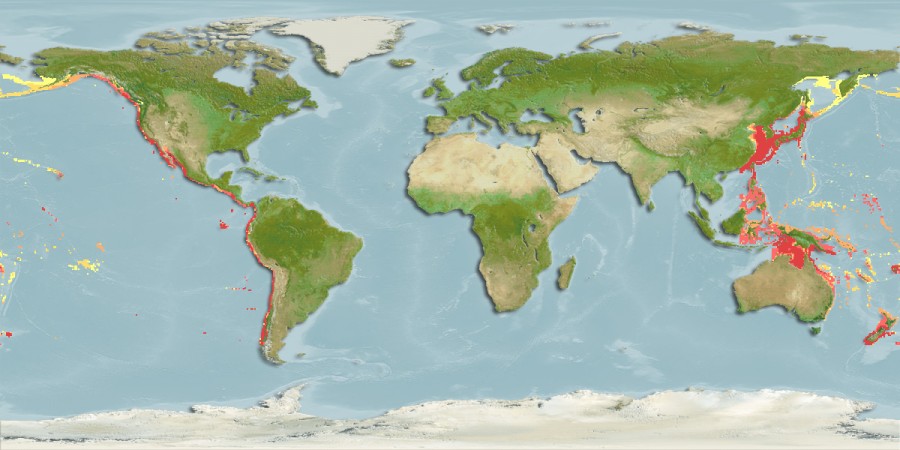Dorsal spines (total): 9 - 11; Dorsal soft rays (total): 11 - 12; Anal spines: 0; Anal soft rays: 12 - 14; Vertebrae: 31. Interpelvic process small and single. No well developed corselet. Swim bladder present. First haemal spine posterior to first interneural process; 12 to 15 interneural bones under first dorsal fin. Anal fin spine conspicuous, clearly separated from anal rays but joined to them by a membrane. Back with narrow stripes which zigzag and undulate. Belly unmarked (Pacific population) or with wavy lines (Atlantic pop.) (Ref. 168). Caudal peduncle with 5 finlets on the upper and lower edge. Distance between dorsal fins shorter than or equal to the first dorsal fin base (Ref. 35388).
Source: FishBase. Collette, B.B. and C.E Nauen. 1983 . (Ref. 168)
